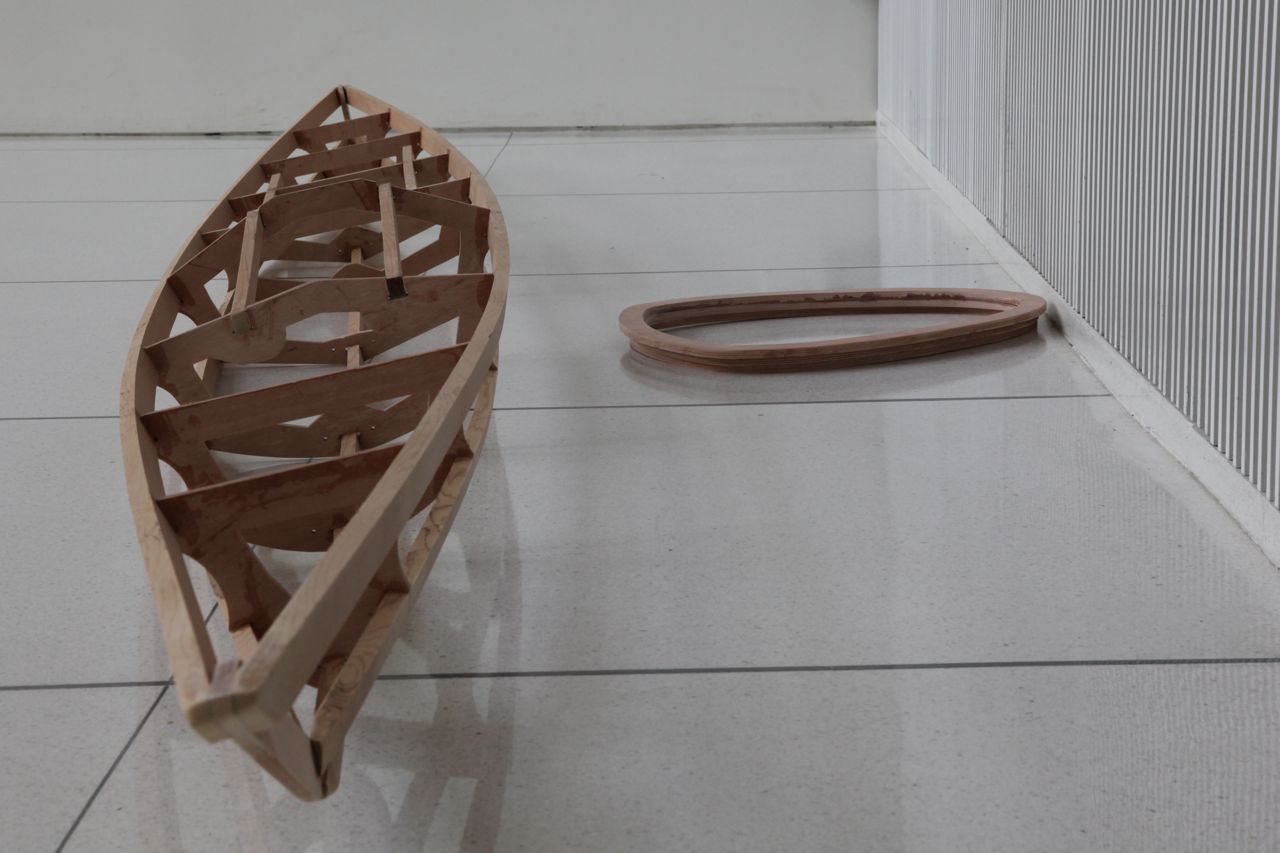
week eight: make something big
This was a fun week. I made a boat. And there was a hurricane.
After some mixed results in past boat-making endeavors (a cardboard yak and a pointless dinghy), I was determined to make a beauty. Or at least something worth putting in the water. I've been wanting to use heat-shrink Dacron fabric to make a skin-on-frame kayak for the longest time, so this was the week. Thomas Yost's website Yostwerks is a really fantastic resource for building strange and beautiful kayaks. I referred to his pages heavily this week when writing scripts and assembling the boat.
I'm really interested in what makes a good boat, so I took this week to write a script I've wanted to write for some time. In the boat building literature, there are very few 3D models of boats available, but what often is freely available is a "table of offsets". This array essentially tells you cross sectional dimensions of the boat at enough places to reasonably characterize the design. I started from a table of offsets for a boat called Sea Rider from Yostwerks. It was straightforward to grab these numbers and generate geometry for the hull and deck. A little more effort produced the cutfiles for the cross sections with notches for stringers, stringer lengths, stem and stern pieces, coaming, and a jig for assembly. All this code should work for any other single-chined boat, and minimal modifications could accomodate multi-chine designs.
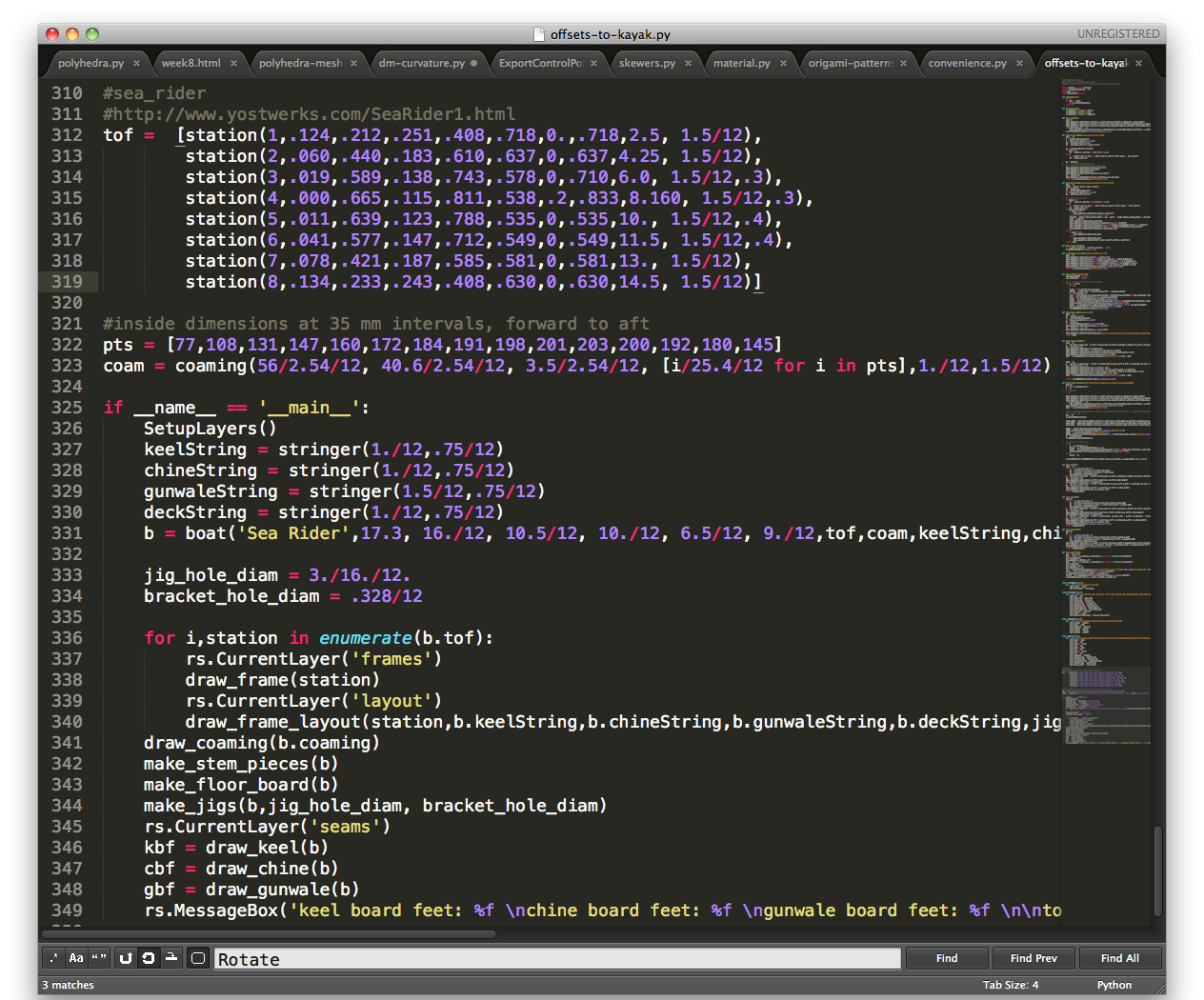 |
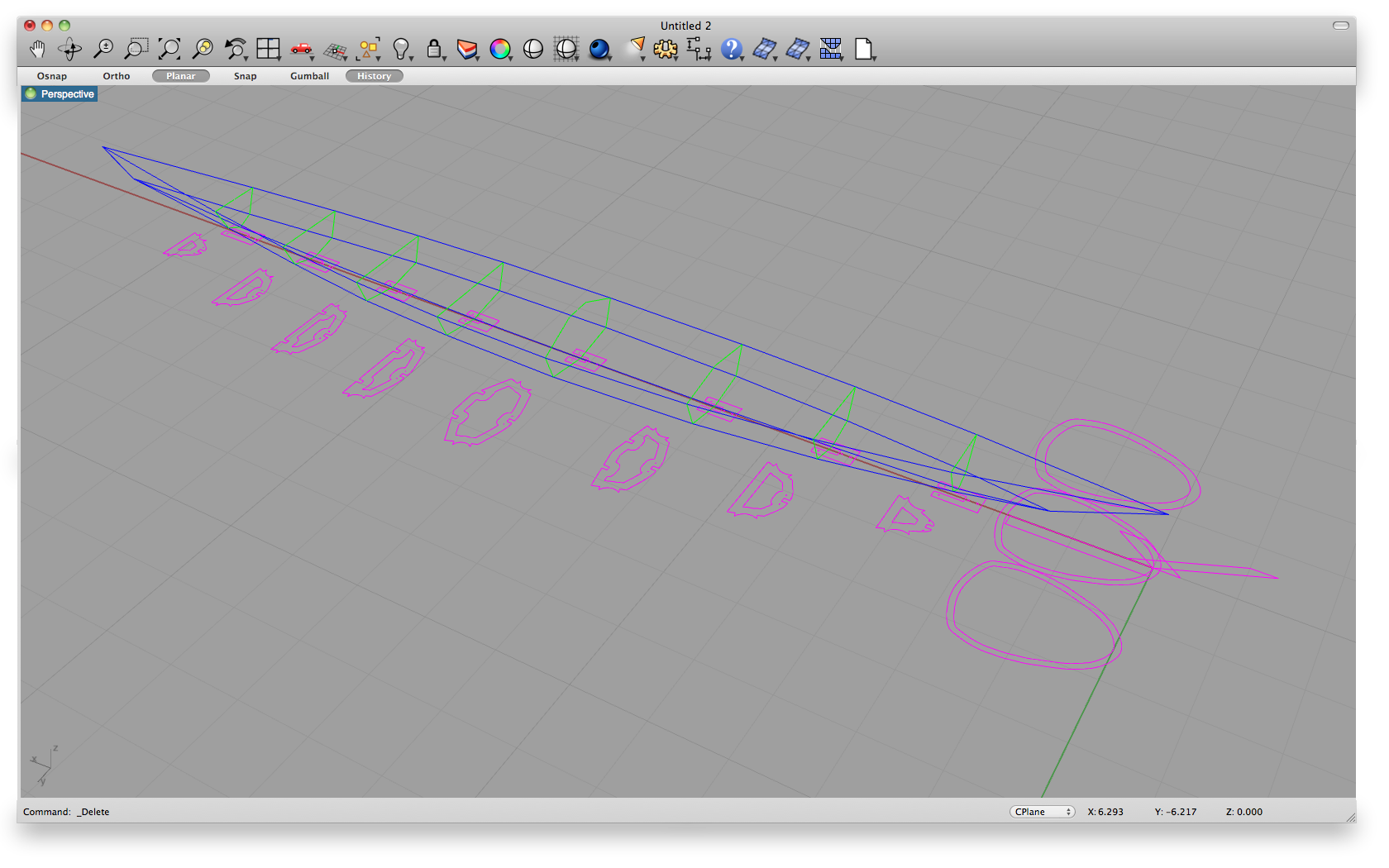 |
I enjoyed the trip to Boulter to by Okoume plywood and a Western Red Cedar 1x10. Also, if you ever need free offcuts, check their back entrance. The magnificent John Di helped me rip the 18' 1x10 down to 1x1 and 1x1.5 stringers. Afterwards, we set up the shopbot to mill my 4x4 plywood with a 1/8" end mill. The bit broke in the middle of the job, despite reasonable feeds and speeds. Always more to learn about milling.
I included jig pieces in my cut file, and I'm really happy with how they worked out. When building a boat, you usually have a strongback on which to mount sections. For my strongback I used a couple pieces of 80-20 that were lying around CBA. The jigs mounted to brackets which help them square and could slide to the right position. Unfortunately, there wasn't all the 80-20 hardware I needed lying around, so some sections floated. This wasn't too much trouble in the end, but I will still definitely stock up on hardware during the next lab restock.
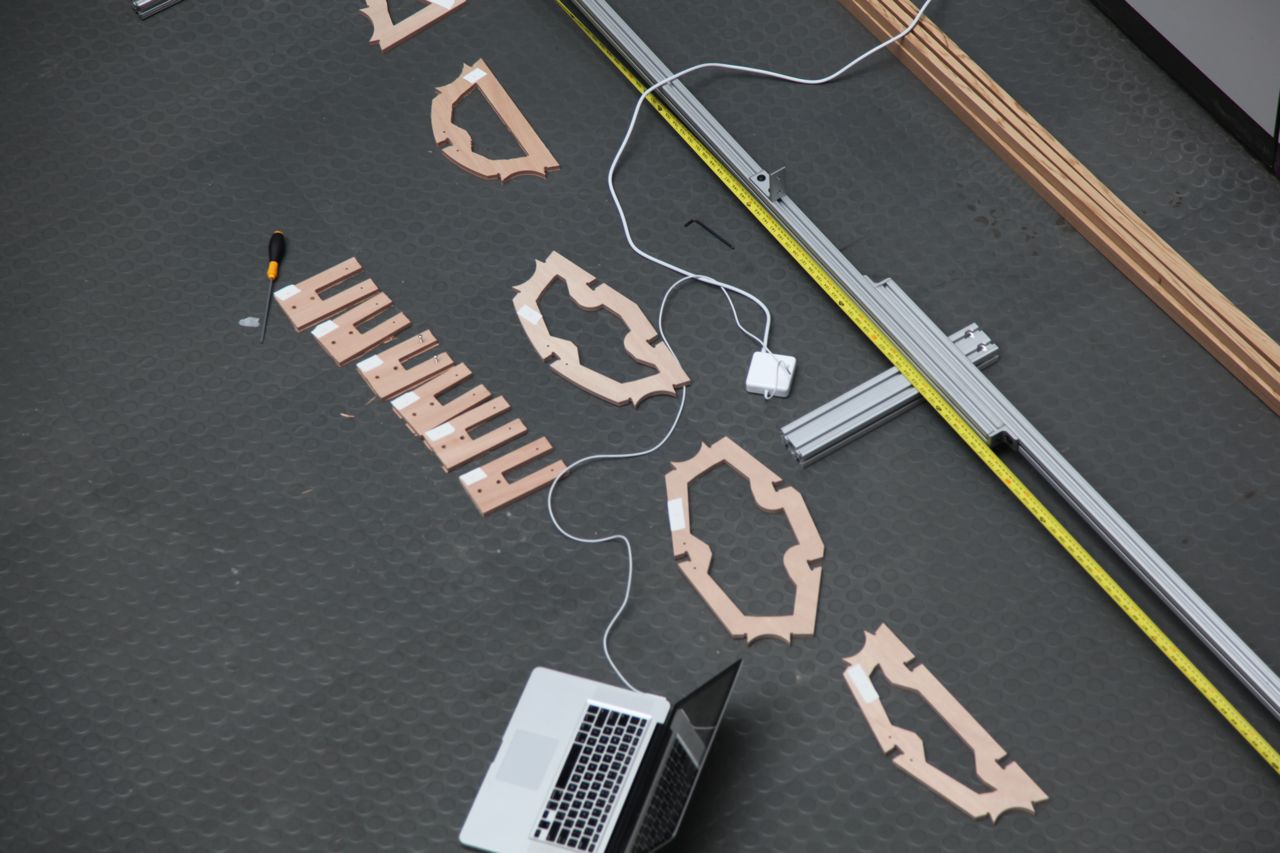 |
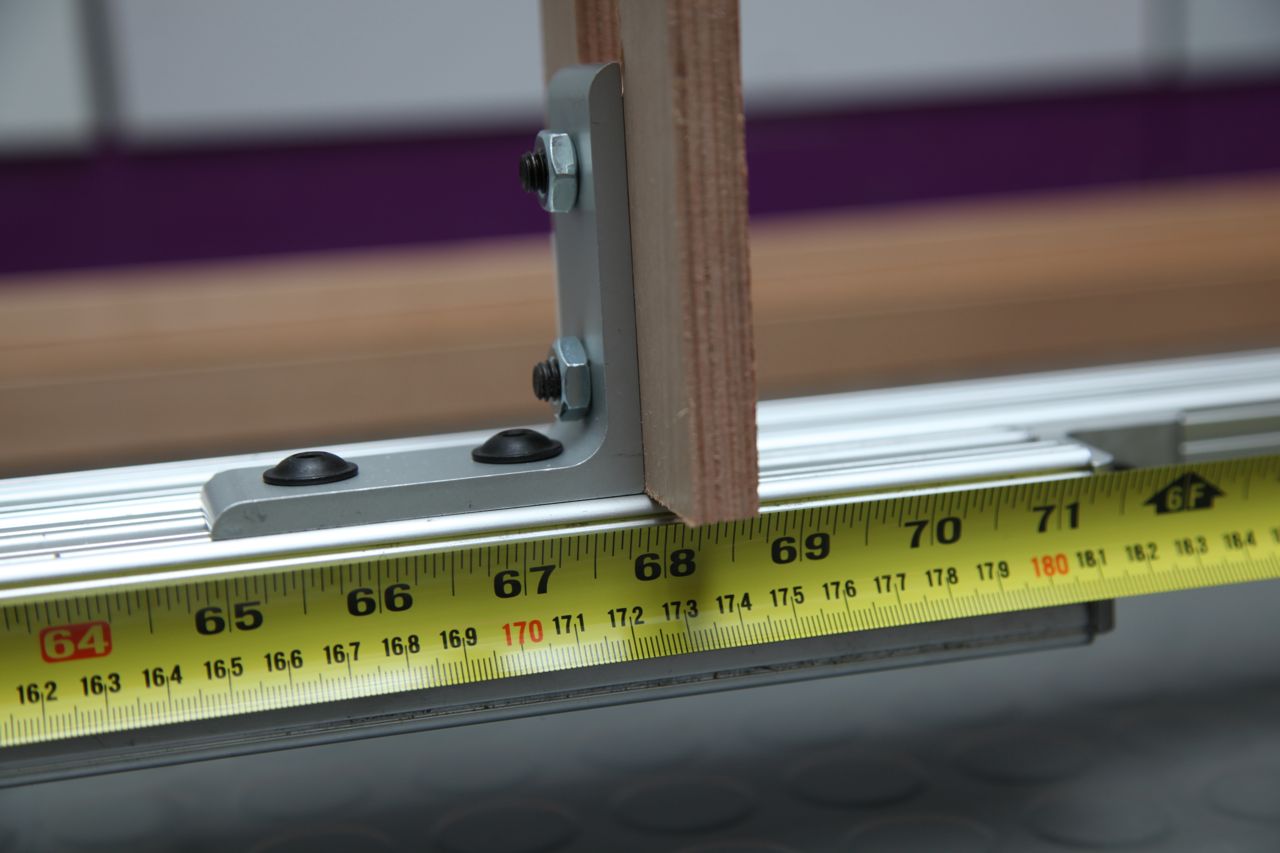 |
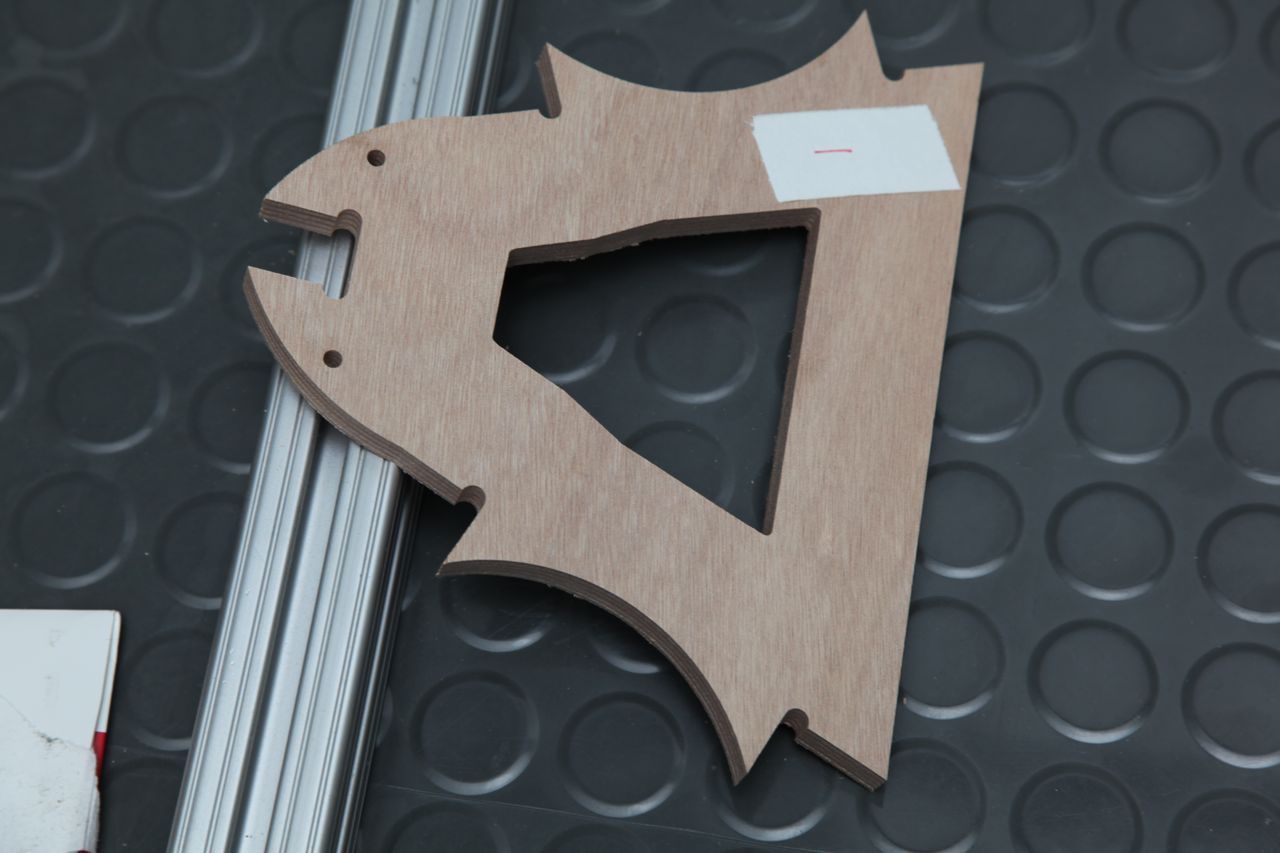 |
 |
After the sections were measured and mounted, I ran the stringers into their alloted notches. This was by far the most satisfying part of the process because the shape of the boat came out over the course of ten minutes. Clamps on either end will hold them completely, and it's spectacular to watch them fall (almost) perfectly into their places.
The stem and stern required some hand word to make all the stringers come together nicely. Marking with a level, I trimmed them flush and made room for the stem and stern plates.
With the stringers placed, I was ready to glue the joints. I used West System Epoxy with 205 Hardener and West System High Density Filler (a.k.a. silica of some sort). The pot life of epoxy depends on pot size. I was always hurrying to glue things before my batch kicked off, so one indexed squirt is where it's at unless you really need more. As the mix becomes thicker, it's a good idea to go back through your work to clean up runs and fillet edges.
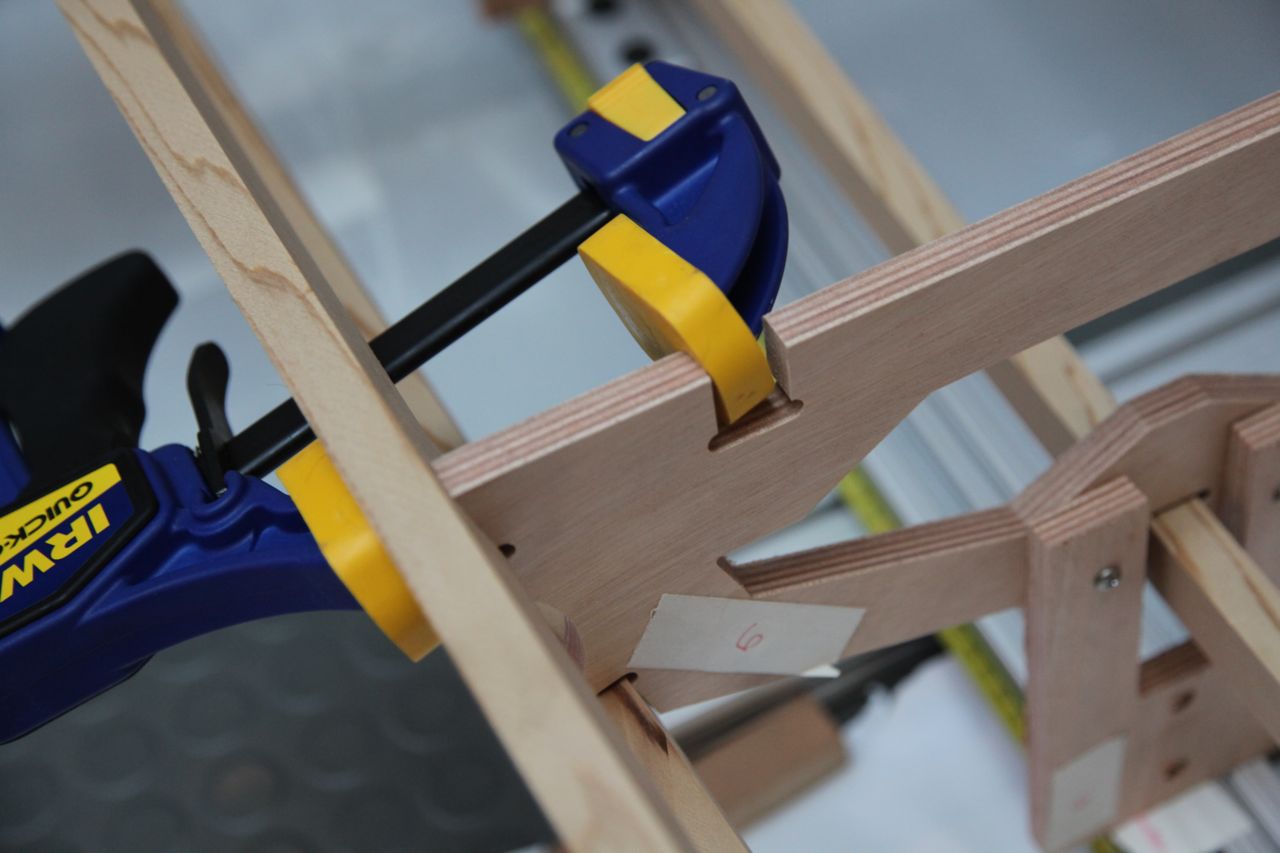 |
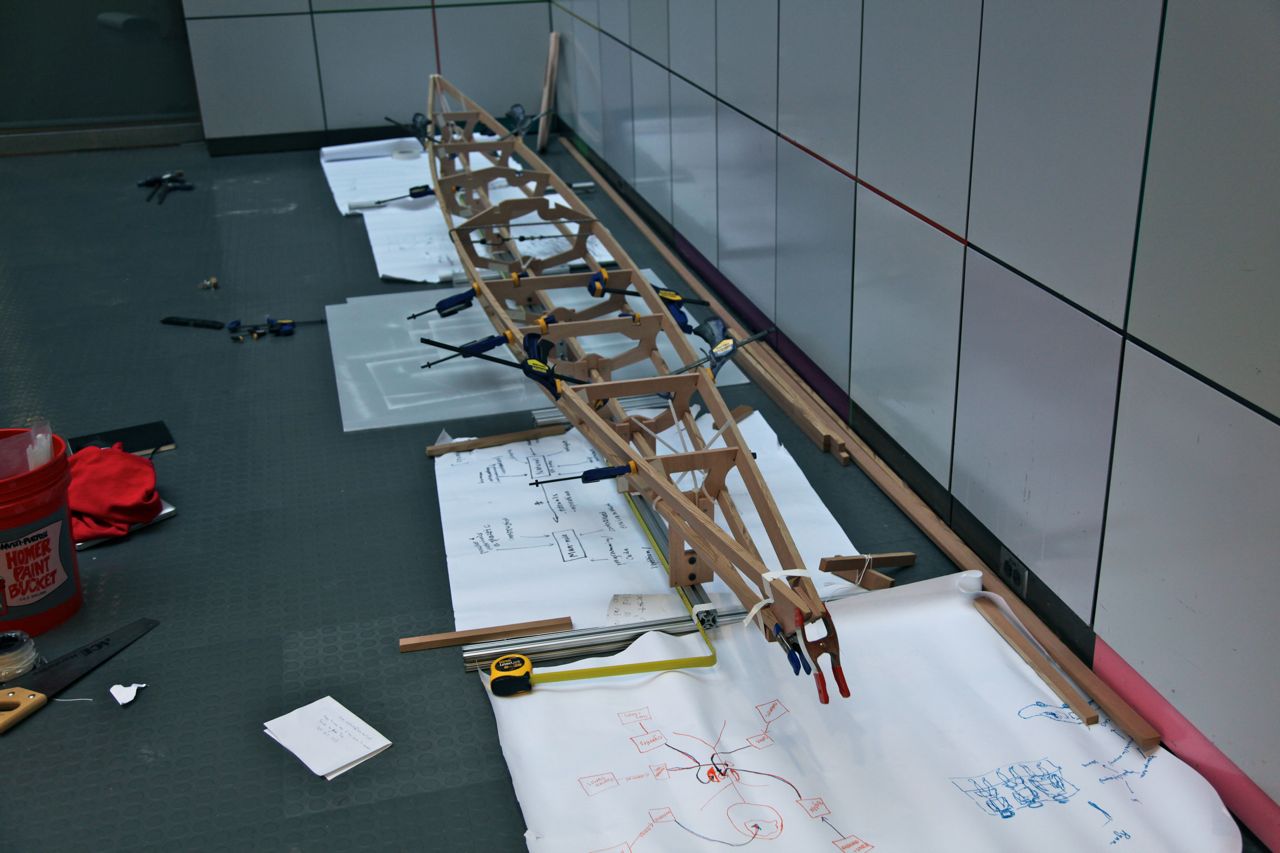 |
Below is some quick footage of the cutting process.
I'm planning to skin the boat (probably with Dacron, Xynol, and Epoxy) during composites week. I'm also hoping to make a sweet composite paddle. So, kayaking on the charles in two weeks?
Now that I've proven this construction method works, I'd really like to dig into creating and modifying tables of offsets. For instance, it would be great to take a boat that is designed for a 200 lb. kayaker and create the 150 lb. version while holding some hydrodynamic quantities fixed. Further, I'm now convinced that an entire table of offsets can be encapsulated by overall length, beam, bow/stern height, and a measure of compactness. The rest seems to be a consequence of the fact that stringers bend like cubic splines.
Files: